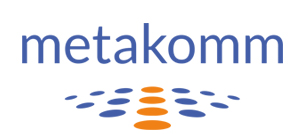Making team meetings more effective

Do you think about your team meetings being often ineffective, usually too long, always talking the same ones and in the end you have hardly made any progress?
Patrick Lencioni has written a book about ineffective meetings and has given it the striking title “Death by Meeting“.
I wouldn’t like to describe the meeting situations in the teams of my clients that drastically. However, I have not yet experienced a team in which everyone is satisfied with the meetings and would describe them as constructive instruments of team communication.
What is the reason why meetings in teams are often ineffective?
- There is no clear objective.
- There is no agenda or standard, unspoken agenda, so no one is prepared for the meeting.
- The composition and number of participants does not match the content of the meeting.
- Attendance is determined by others. The organizer decides who attends which meeting.
- The meetings are poorly or not facilitated at all.
- There is noncommitment and little personal responsibility. Tasks are only vaguely derived from the meetings. Responsibilities for implementation are only vaguely agreed.
- Participants are late.
- Meetings are so long that participants write “important messages” and answer e-mails on the side.
- Topics that concern only some of the participants are covered and discussed.
- Too many different topics are included in one meeting (“Since we have all of them together …”).
The list could go on and on. I’m sure you’re familiar with most of these reasons.
Meetings are seismographs for the mood and the communication culture in the company. They reveal power relationships and reveal the values that are practised.
Is the boss inviting? Is he/she the only one setting the agenda without input from the participants? Is the meeting mainly a one-way communication?
Are only technical matters discussed in meetings or is cooperation also regularly discussed and mutual feedback given?
Is there room for ” brainstorming” ideas?
Are there special meeting roles that alternate through the team on a rotational basis, such as someone who pays attention to the focus of the subject matter, someone who takes the customer’s view or someone who is in charge of timekeeping?
These abovementioned meeting situations represent particular types of teams. In meetings that are planned and conducted by the manager alone, there is probably little proactivity or criticism. In meetings where roles are rotated, communication is certainly open, less hierarchical and co-creative.
How do team meetings work and have an effect?
Meetings provide an important framework for team interaction. If, for example, there is a slot in the team meeting once a month to discuss mistakes made and lessons learned, it is easier for everyone in the team to raise mistakes or uncertainties on their own initiative. If there is hardly any time to discuss all the technical subjects in meetings, mistakes will probably only be addressed when a lot has happened and a comprehensible damage has already occurred.
The setting of the meeting, the room situation and the composition of the participants play a major role in the extent to which the participants can get involved with topics at all. If I have already spent two hours going through status updates in a large group and the chairperson asks me in the last 10 minutes what the general mood in the team is like, hardly anyone will be prepared to open up so readily and engage with the topic.
The communication culture in the team can be improved by changing the meeting formats.
Two starting points for improving the quality of team meetings
In order to improve the meeting quality, I recommend to review the meetings carefully under two aspects.
First, you can identify what can be improved in planning, structure, and execution.
Second, you can review the meeting architecture to see if it makes sense.
Eight tips for structuring and conducting meetings
- Separation of daily business and fundamental questions
- Each meeting has a distinctive name that clarifies its purpose.
- No meeting without an agenda and documentation; the agenda is set by all participants.
- The meeting is facilitated. The facilitator has a wide range of methodological skills to work on and visualize the topics. Ideally, the team members alternate in the facilitation role. This is a good learning opportunity to improve facilitation skills and also increases respect for the facilitator and the facilitation method.
- A goal is set for each agenda item: Information, discussion, brainstorming, decision making, etc.
- Participants are selected according to the topic, rather less than more.
- Speaking contributions by individuals are limited in time to ensure appropriate speaking opportunities for all. If someone does not need to speak in a meeting or only little, he/she could probably spare himself/herself the attendance and just read the minutes.
- The last 10% of meeting time is reserved for distribution of to do’s, time planning and meeting feedback.
Checklist for a target-oriented meeting architecture
From time to time it makes sense to analyze the existing meetings in the team.
Often the basic problem is not that there are too many meetings, but that there is no differentiation between meeting formats.
As checklist for the analysis the following can be used:
- What different meetings do we have?
- What are they called?
- How long do I spend in meetings per week in total?
- What is their frequency?
- In which meeting formats do we “meet”?
- How long do the meetings last?
- Who are the participants?
For each meeting format I recommend to reflect together on the following questions:
- What do we want to achieve with the meeting: Mutual updates, penetrate a problem and look for solutions, make decisions or discuss the strategy of the future?
- How well does the meeting achieve its goal?
- Which participants are the right ones for the meeting?
- Which framework and methodology is needed?
Team meeting formats
To redesign meeting formats, you can easily look at meeting structures from agile frameworks and apply agile moderation methods to your own meetings.
Planning meeting to plan the next steps and tasks should be as short as possible, frequently held with as few participants as possible.
Daily for a short exchange about progress and current obstacles can be held while standing. It also works very well in non-development teams. It is important that each participant is consistently timeboxed so that the meeting is really short. Helpful is a structure-giving guideline and a visualization, e.g. with a kanban board.
In a review meeting, results are looked at and conclusions are drawn. The team should regularly plan more time for this type of meeting (at least one to two hours).
At larger intervals, teams should also take time for a retrospective. This is a moment to look back and give each other feedback. Values and principles can be reflected upon and cooperation can be improved. A retrospective also requires more time (two to four hours)
For creative brainstorming and innovation in a team, a think-new-meeting is the perfect opportunity. The most effective way of doing this is in external premises with sufficient time. The change of environment, being detached from daily business and the available time let ideas arise and play with them.
Bottom line
Meetings need not be unsatisfactory and time-consuming. Teams should regularly take the time to review their meeting structure and change it if necessary. It is particularly effective to set up various meeting formats for different occasions and to keep them shorter and with fewer participants.
Each team can decide for itself best how many meetings in which meeting format and in which time interval make sense.



